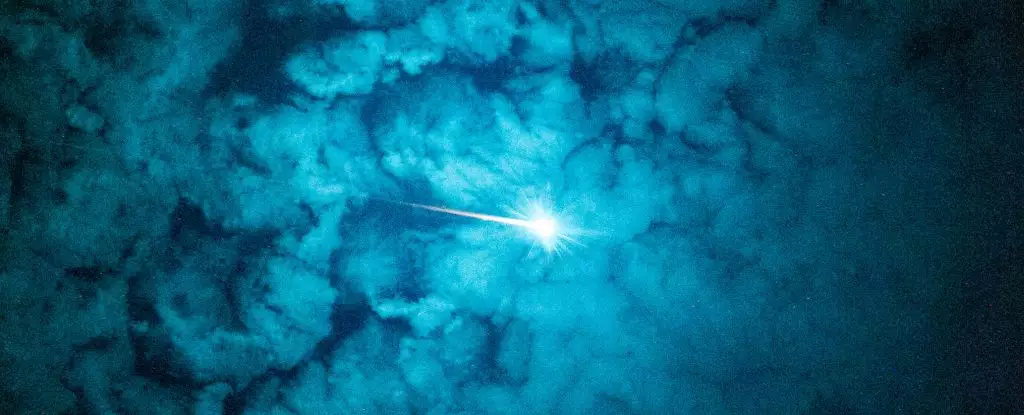In recent years, the Sun has been exhibiting unprecedented activity, and its ramifications have been felt on Earth—in particular, through the multitude of satellites launched into low-Earth orbit by SpaceX as part of the Starlink project. A groundbreaking analysis led by Denny Oliveira at NASA’s Goddard Space Flight Center scrutinizes this phenomenon, revealing an undeniable correlation between solar phenomena and the fall of these satellites. The study meticulously highlights that the current solar cycle, identified as the 25th, displays heightened solar activity that coincides with a significant uptick in the reentry incidents of Starlink satellites. The implications of this research are manifold, illuminating not just the relationship between solar activity and satellite longevity but also the subsequent challenges for future space operations.
The Mechanics Behind the Sun’s Fury
Understanding the mechanisms at play is essential. The Sun undergoes an 11-year cyclic pattern, characterized by the magnetic reversal of its poles. This cycle witnesses various solar phenomena such as sunspots, solar flares, and coronal mass ejections—each contributing to the Sun’s overall behavior. While the current cycle is robust, exhibiting more activity than anticipated, the effects of this solar tempest extend far beyond mere visual spectacles like auroras. Increasing solar ejections create a direct impact on the Earth’s atmosphere, heating it and increasing atmospheric density. This result in turn affects spacecraft in lower orbits, imposing greater drag forces that jeopardize their trajectory.
A New Era of Satellite Research
SpaceX’s audacious entrance into the realm of satellite internet connectivity has inadvertently paved the way for unprecedented research opportunities into orbital dynamics under varying solar conditions. With nearly 9,000 Starlink satellites launched, the size of this fleet offers a unique laboratory for studying how solar maximum influences these machines. Oliveira’s study investigated the reentry of 523 Starlink satellites from 2020 to 2024 and advanced understanding of their reimagined trajectories in relation to solar activity. The findings are not merely academic; they expose vulnerabilities that have bearings on not just Starlink but the broader picture of satellite operations amidst increasing solar activity.
The Data Speaks: A Crucial Analysis
Delving into the particulars, the analysis categorizes the atmospheric reentries based on geomagnetic conditions at the time of their descent. Surprisingly, a substantial 72% of the reentries occurred under weak geomagnetic conditions. This pattern denotes that cumulative drag over time played a more significant role than sudden and intense solar storms. Such revelations challenge the conventional wisdom regarding satellite stability, emphasizing that gradual orbital decay can be just as perilous as direct hits from solar storms. The data provides a vital perspective that can aid engineers in creating strategies to fortify these satellites against fluctuating solar conditions, enhancing their longevity and operational efficiency.
The Challenges of Skyward Connectivity
As fascinating as this intersection of solar science and satellite technology may be, it raises pressing questions about the sustainability of large satellite constellations. The exponential rise in satellite falls—from two incidents in 2020 to a staggering 316 by 2024—does not merely signal an impending crisis but also brands a cautionary tale for the future of space infrastructure. Such an organic uptick in satellite failures could result in crowded orbits and exacerbate the risks of catastrophic collisions, igniting concerns about the so-called Kessler syndrome. This cascade effect could endanger not just the Starlink program but any future endeavors that rely on low-Earth orbit for services.
A Call to Action for Future Endeavors
The work of Oliveira and his team holds potential for paving pathways toward improved satellite management strategies. As their research indicates, short-cadence data from Starlink can significantly enhance orbital drag models, offering avenues to mitigate the adverse effects of intense solar activity. As the cosmic ballet of the Sun continues, we are compelled to recalibrate our understanding of how solar mechanics impact human endeavors in space. Satellite operators must remain vigilant, balance enthusiasm for innovation with the necessity for sustainability, and embrace the risk management strategies evolving from these findings to ensure a sustainable future for satellite technology.
In a realm where cosmic forces collide with human ingenuity, the narrative of our ambitions in space will need to be written with cautioned optimism. By understanding the fiery nature of our Sun and its intricate dance with our satellites, we may not only safeguard our technological investments but also enrich our exploratory spirit as we journey further into the vast unknown.


Leave a Reply